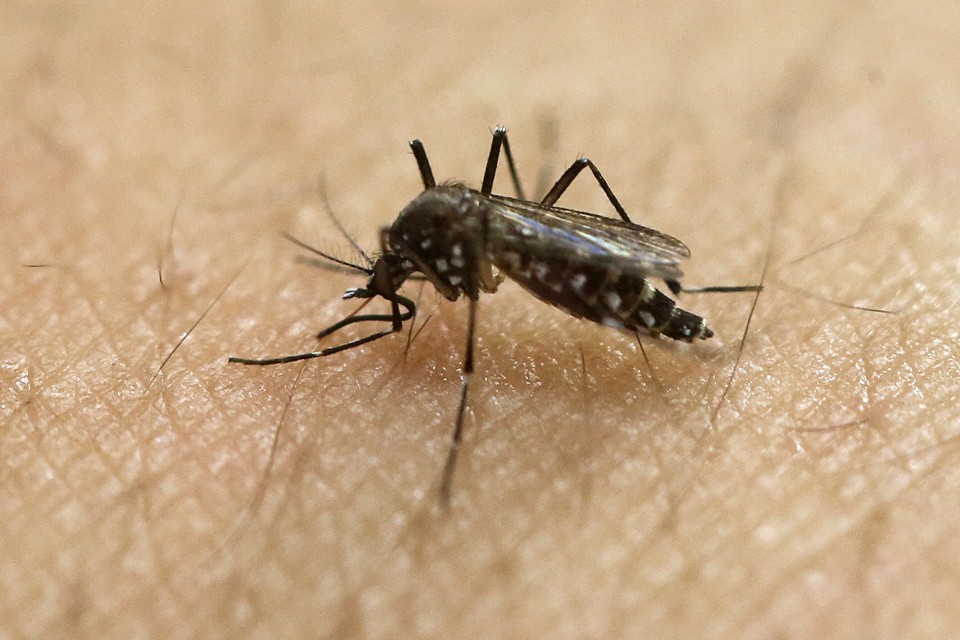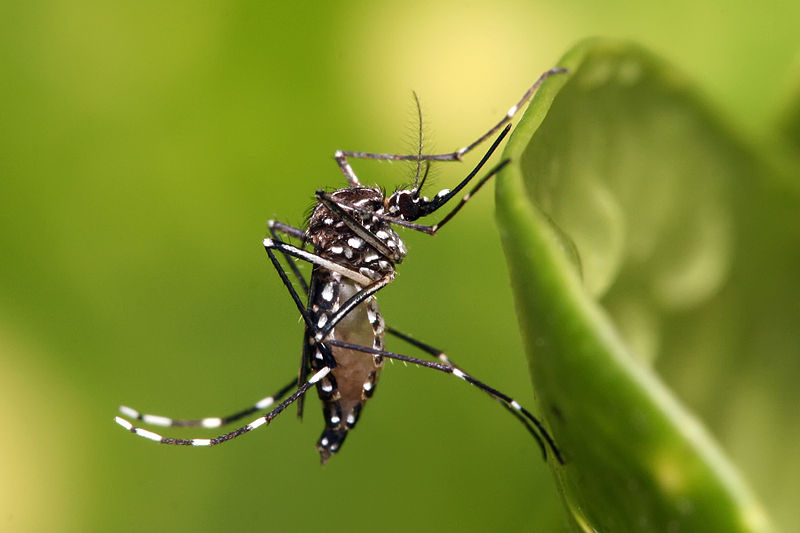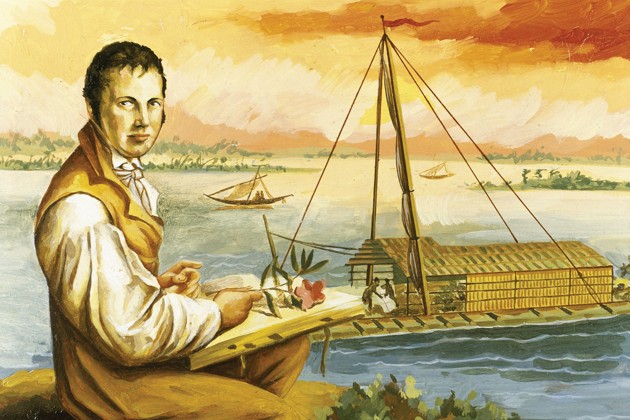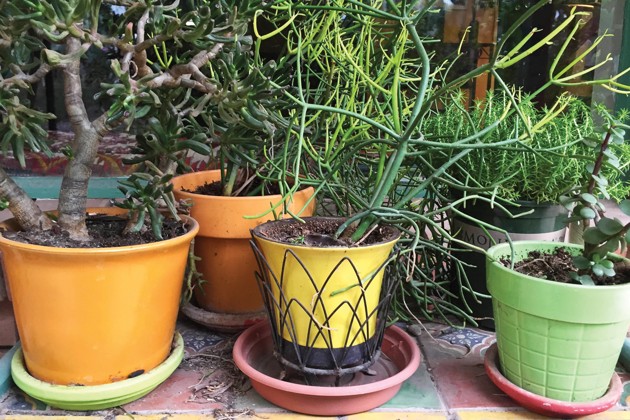How urban development led to the prosperity of mosquitoes

I moved to my apartment in Tucson, Arizona, at the same time as the start of the snorting monsoons, during which the skies burst into rain orgies about once a week. For a short time, roads, sidewalks and ravines filled with water, interrupting the summer heat, leading to the emergence of vegetable plots and gardens, and inspiring me to plant.
Less than a week later, mosquitoes forced me to abandon my plans. I ran my evaporative cooler and watched the dawn through the dusty windows. But wherever I went, mosquitoes haunted me everywhere, even in the shower. Aedes aegypti, the mosquito of yellow and white is a delicate and careful creature with fluffy antennas and silvery markings. His long legs are painted in black and silver stripes, and his dark body is covered with white dots. Aedes aegypti is clever and quick - I couldn’t swat one, I just hit myself in the face. Precisely because I wanted to write in a relaxed atmosphere, I did not need neighbors.

')
Tucson is an arid place, and the abundance of mosquitoes may surprise new arrivals who are unfamiliar with the ecology of the city. Here, in the borderlands, the history of man can be everywhere and nowhere at the same time, changing the landscape and erasing from memory. Today’s ecology is a witness to the past, albeit in the form of bloodthirsty insects. Aedes aegypti, these tiny sources of torment, flourish wherever they find water. On the ruins of parties by the pool, in road garbage, in puddles, in violent attempts to break gardens. In Tucson, Aedes aegypti tells stories, from which it follows that even seemingly insurmountable boundaries — such as the boundaries between city and nature, between bodies, countries, and continents — are surmountable.
In May, Casey Ernst [Kasey Ernst], an epidemiologist and infectious disease specialist from the University of Arizona, traveled from Tucson to speak to Congress about the Zika virus. Ernst explores the relationship between mosquito-borne disease and the environment. Ernst, a bright-eyed researcher, an arbovirus specialist, explains working with statistical software for restless students in his office as patiently as he summarizes the predictions for infectious diseases on a national scale for Republicans.
Ernst begins with the appearance of mosquitoes in North America - and, judging from the yellow fever epidemics, this happened in the 1640s - and brings members of Congress to current scientific knowledge about Aedes aegypti and the potential of Zika epidemics.
Insect, virus and man form a complex triangle of relationships. Ernst describes unanswered questions that are at his center. Did the virus transmit vertically when the infected female mosquito transmitted the Zika virus to its descendants? Scientists have discovered an infected male. But the males do not feed on blood, which indicates a vertical transmission. Having appeared in one place, theoretically the virus can remain there for years.
Scientists do not have basic information on Aedes aegypti, for example, on the distribution of mosquitoes in North America. Ernst explained that different communities monitor mosquitoes differently. Some have no means of observation at all, let alone control. In the border with Mexico area where she lived, the same people often engaged in controlling mosquitoes, checking restaurants, harassing parasites, and other environmental issues.
One thing was clear. “This mosquito uses how we have changed our environment,” says Ernst.

It was human activity that attracted mosquitoes. Combining the vital habitats of insects and mammals is necessary for the survival of mosquitoes and the transmission of diseases. To understand this, it took centuries. One of the first to study Aedes aegypti in the Americas was the Prussian explorer Alexander von Humboldt. In the second volume of its "Personal descriptions of travels in equatorial regions of America in the years 1799-1804" there is a section "Mosquito plague". The chapters are called "The intensity of the plague", "Their gluttony in certain places", "The consequences of a mosquito bite" and "The absence of any kind of medication."
Humboldt, a scientist and adventurer with flowing hair and blue eyes, traveled in Latin America on foot and boat for five years, being just over 20 years old, and ended the journey in 1804 when Lewis and Clark began their expedition along the Western United States. Humboldt crossed the Orinoco River by boat, the first among Europeans. He traveled with the French botanist Aime Bonplan, his servant, whom he recorded, like José, five local residents, whose names he had not written down at all, and Father Zi, who lived in an isolated mission in the jungle.
But, unfortunately for him, mosquitoes were an integral part of this world, their specks were a mystery, and discoveries were anguish. In his "personal descriptions," Humboldt tried to create a certain impression on readers waiting for him at home. The “mosquito plague”, where references to Dante are made, really reads as if it was written by a man whose voice is gradually getting higher and higher.
“No matter how firmness of spirit is used to endure pain without complaints,” wrote Humboldt, “whatever the scientific interest in the objects of study, it is impossible not to be constantly distracted by mosquitoes and other insects.” This litany includes mosquitoes, midges, and biting flies, swarming around the hands and face, biting through clothes, flying into the nose and mouth, causing attacks of blowing your nose and coughing when trying to talk.
At the end of the 18th and the beginning of the 19th centuries - until the invention of mosquito nets, repellents and solid walls - there were no closed places where people could hide from parasites. Missionaries and villagers, met by Humboldt on the banks of the rivers, hardly slept, and not because they did not try.
According to his description, techniques for getting rid of mosquitoes included: burying in the sand; sleep surrounded by cows; building a tree house; sleep among the waterfalls; the use of capes of such sultry that sometimes had to jump up and walk in the air filled with mosquitoes; filling the room with smoke so small that it had to crawl in and close it from inside for the night. These rooms were called Hornitos, or "small stoves." Humboldt shares with the reader such useful details as the fact that the smell of crocodiles does not deter mosquitoes, and that all the time he and the satellites were flaying the crocodile, the mosquitoes were not asleep.
Apparently, desperately trying to sleep properly, Humboldt was looking for signs of the absence or presence of mosquitoes and other insects in everything, from the color of the river water to the fatigue of insects. He made a correlation between the increase in the number of mosquitoes and the decrease in the quality of life of people, describing places infested by mosquitoes as “practically unsuitable for life”.
But if mosquitoes make places unsuitable for people, then perhaps cities and houses will make places unsuitable for mosquitoes. Humboldt assumed that the destruction of the forest could reduce their populations, and that there are fewer problems with mosquitoes in cities with large lawns and squares. He thought: “There will be fewer insects when the old trees disappear, when houses are located in the deserted countries along the banks of rivers, and the spaces are covered with pastures”.
But Humboldt was unaware that the changes he proposed would have unforeseen difficulties. What seems to be creating order from chaos, building European cities among the tropical forests of South America will disrupt social and ecological systems, and lead to a threat to health, including the spread of insects and the diseases they carry. He, of course, did not know anything about the diseases and the ability of insects to bear them. He explored Orinoco five years before the birth of Charles Darwin. Without an understanding of evolution, he did not know that human behavior could affect insects. Like his contemporaries, Humboldt believed that insects and diseases emerge from "miasms" - from harmful air.

Aedes aegypti appeared in West Africa in the treetops, and fed on monkeys. When people began to cut down trees, mosquitoes descended to the ground and found us, the new owners. He flew from the forest to the gardens, from prehistoric wildlife to the cities. The urban Aedes aegypti evolved into a separate species.
Like urbanized mosquitoes, Aedes aegypti breeds best in rainwater collected by people: for watering the garden, in garbage, empty cans, water collection systems. They live no further than half a kilometer from people's dwellings. They are hard to hear, and they feed in places where they are hard to swat - on the inside of the elbows, at the ankles, on their backs and knees. If you can choose between a cow and a man, Aedes aegypti will choose a man.
Optimistically named "Mosquitoes and control over them," the book explains that "mosquitoes are found everywhere except in deserts and areas of permafrost." Geographer Melinda Butterworth [Melinda Butterworth] drew my attention to the fact that Tucson is not a desert. In a courtyard sheltered from the sun, where temperatures are 10 degrees below zero and water stagnates in old flowerpots, mosquitoes thrive.
Humboldt did not know virology and could not know about acquired immunity and arboviruses. The Europeans who came to South America suffered from inflammations at the site of insect bites, while the local people of the “copper color”, as Humboldt described them, did not suffer. He attributed this to racial differences and believed that insect venom could be used to separate people into different races. He believed that "Indians, and all people of color, suffer as much as whites at the time of the bite, although they may not be so hurt."
Many adults of the “copper color” had to suffer from yellow fever and other tropical diseases in childhood, and thus acquire immunity. And the more members of the community acquired immunity, the fewer people left behind became ill, as the vector of the disease was decreasing. Now we call it tribal immunity. Naturally, the European satellites of Humboldt should have been seriously suffering from disease. He did not understand that countless locals died when mosquitoes first descended to earth.
The joint ecology of people and mosquitoes turned into an international one four hundred years ago, when people began to actively travel on large ships, transport containers with water contaminated with mosquito larvae and cargo from slaves. Since then, primates and insects have become constant, albeit unintentionally, companions. People spread across the globe, and Aedes aegypti spread with them, and human habitation in places with mild winters became Housing Aedes aegypti. Today, they continue to accompany us - they thrive in the tropics, but their eggs can survive a year-long drought. Genetic studies show that Aedes aegypti in the southern borderlands are related to mosquitoes in coastal Mexico and the east coast of the United States.
Today, in the borderlands, the arbovirus pledge is globalization with the addition of climate change. Ernst expects the Chikungunya virus to reach Arizona. Dengue arbovirus has not yet reached Tucson, but climate change can change this situation - if not directly affecting mosquitoes, then influencing how people store and use water, and change the world in terms of mosquitoes. When Ernst interviewed local people for their understanding of the dangers of dengue and its spread, some of them mentioned miasms.
And when I think that I am already approaching the heat of torment because of mosquitoes to the Humboldt level, and I cannot sleep at night, I do what Humboldt would never do: run away. More precisely, I leave for relatives to the east.
Sometimes I believe that you can get rid of mosquitoes by properly equipping housing. If only my apartments had tightly fitting mosquitoes and air conditioners, if my neighbors did not plant richly watered gardens, but would be engaged in landscape design that does not require water, if the water from the rain in Tucson was regularly gone, I would get rid of the parasites.
But then I upset myself. Like Humboldt, I imagined that I could build something to isolate myself from what adored built-up environments were. That I can interfere with something that thrives through interventions. So far I have not thought about the luxurious life in the desert - with swimming pools, long flights and products delivered from around the world - I did not think about the rhythms, structures and aspirations of life, opening all the doors for mosquitoes.
Source: https://habr.com/ru/post/397935/
All Articles